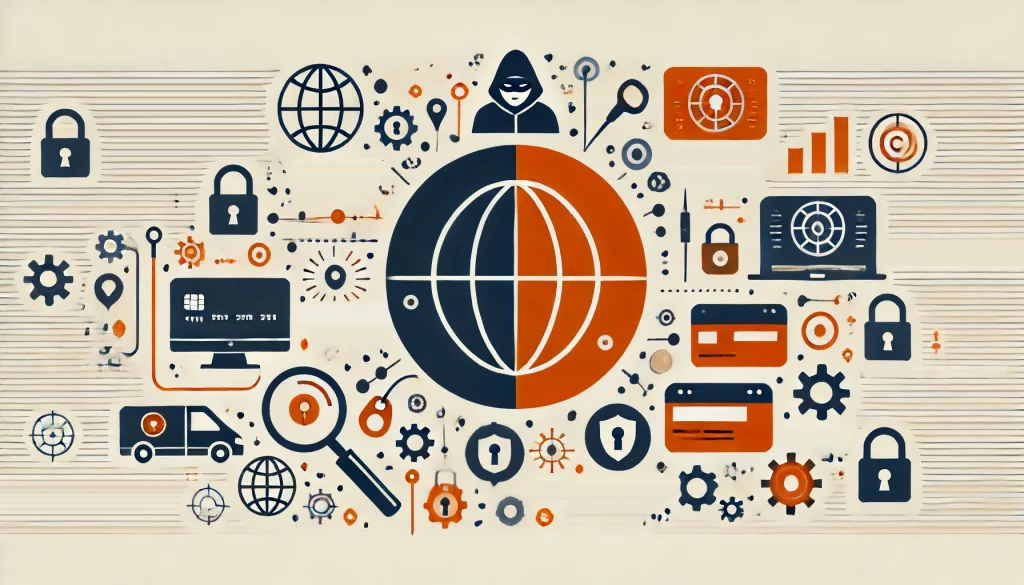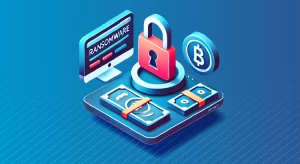
Cybercrime: The Definition, Types, and Prevention Strategies

As technology continues to advance and integrate into our daily lives, cybercriminals find new ways to exploit vulnerabilities and carry out malicious activities. The internet allows criminals to operate globally and anonymously, making it easier for them to avoid consequences in different countries. This article will explain what cybercrime is, the different types of cybercrime, how it affects society, and ways to prevent it.
What is Cybercrime?
Cybercrime refers to any criminal activity that involves the use of computers, digital devices, or networks. These crimes can be driven by money, revenge, politics, or just a desire to cause chaos.
Cybercriminals use many different methods to reach their goals, like hacking, spreading malware, tricking people, and stealing identities. Cybercrime is constantly evolving and widespread. This makes it difficult for law enforcement and cybersecurity experts to keep up with the latest threats.
Types of Cybercrime
Malware Attacks
Malware, short for malicious software, is a common tool used by cybercriminals. Viruses, trojans, ransomware, and spyware are all examples of malware that can infect devices and cause damage.
For instance, ransomware attacks encrypt a victim’s files and demand a ransom payment in exchange for the decryption key. In 2017, the WannaCry virus attacked 200,000 computers in 150 countries, causing chaos and financial harm to businesses and people. The attack showed how important it is to regularly update and patch software to protect against security threats in Windows.
Phishing Scams
Phishing tricks people into giving away important information like passwords or financial details. Cybercriminals often send fraudulent emails or create fake websites that mimic legitimate ones to lure victims. These emails may contain urgent or threatening language, prompting the recipient to take immediate action, such as clicking on a malicious link or downloading an infected attachment.
In 2020, phishing attacks increased by 220% compared to the previous year, largely because the COVID-19 pandemic and the shift to remote work. This surge in attacks underscores the need for individuals and organizations to remain vigilant and educate themselves on how to identify and avoid phishing attempts.
Identity Theft
Identity theft occurs when a cybercriminal obtains personal information, such as social security numbers, credit card details, or login credentials, to impersonate the victim for financial gain. This can lead to unauthorized transactions, fraudulent credit applications, and damage to the victim’s credit score.
Cybercriminals may obtain this information through various means, such as phishing scams, malware infections, or data breaches. In 2019, 14.4 million people in the US were victims of identity theft, resulting in $16.9 billion in losses. Identity theft can cause emotional and financial harm. Victims may spend months or years fixing their credit and reclaiming their identities.
Impact of Cybercrime
Cybercrime affects more than just the victims; it can also impact society as a whole. Businesses that fall victim to cyberattacks often suffer financial losses and loss of customer trust. The expenses of dealing with a cyberattack can be high and may lead a company to go bankrupt in some cases.
Businesses can face legal consequences if they do not protect customer data or follow regulations like the GDPR in the EU.
Cybercrime also has a significant impact on individuals, particularly those who fall victim to identity theft or online harassment. Having your personal information stolen or being threatened and abused can be really hard on your emotions. Victims may experience feelings of anxiety, depression, and a loss of control over their lives. Cybercrime can have lasting effects, making it hard for victims to fix their credit, reputation, or recover from the trauma.
Cybercrime Prevention Strategies
Education and Awareness
One of the most effective ways to combat cybercrime is through education and awareness. Individuals and organizations should stay informed about the latest cybersecurity threats and best practices. Regular training, workshops, and awareness campaigns can help employees recognize and address potential threats like phishing emails or suspicious links.
By fostering a culture of cybersecurity awareness, organizations can create a strong first line of defense against cyberattacks. Teach people to use strong passwords, turn on two-factor login, and be careful about sharing personal information online.
Strong Passwords and Multi-Factor Authentication
Use different passwords for each account and turn on multi-factor authentication to lower the chance of unauthorized access. A strong password should be at least 12 characters long, include a mix of uppercase and lowercase letters, numbers, and special characters, and avoid using easily guessable information such as birthdates or pet names.
MFA enhances account security by requiring additional verification from users. This can include a fingerprint scan or a one-time code sent to their phone. Users must provide this verification before gaining access to their accounts. By taking these steps, people and companies can make it harder for hackers to access their accounts and systems without permission.
Keeping Software and Systems Updated
Regularly updating operating systems, software applications, and security tools is crucial in preventing cybercrime. Software vendors often release patches and updates to address known vulnerabilities and improve security features. Cybercriminals actively seek out and exploit these, often within hours of their public disclosure.
Installing updates promptly can help individuals and organizations reduce the risk of cyberattacks that target known weaknesses. This applies to all devices connected to the internet, including computers, servers, mobile devices, routers, and other IoT devices.
Conclusion
Cybercrime poses a significant threat to individuals, businesses, and society as a whole. As technology continues to evolve, so do the tactics and techniques employed by criminals. By learning about cybercrime and its effects, we can take steps to keep ourselves and our online information safe from harm.
To stop cybercrime, we need to educate people, have good security, and be ready to respond quickly to any incidents. To stay safe from cybercrime, we should stay alert, update our software, and raise awareness about security. This will help make the digital world safer for everyone.
By taking a proactive and collaborative approach to cybercrime prevention, we can help build a more secure and resilient digital future for ourselves and generations to come. This requires a commitment from all stakeholders to prioritize cybersecurity, invest in education and training, and foster a culture of shared responsibility for the safety and security.
